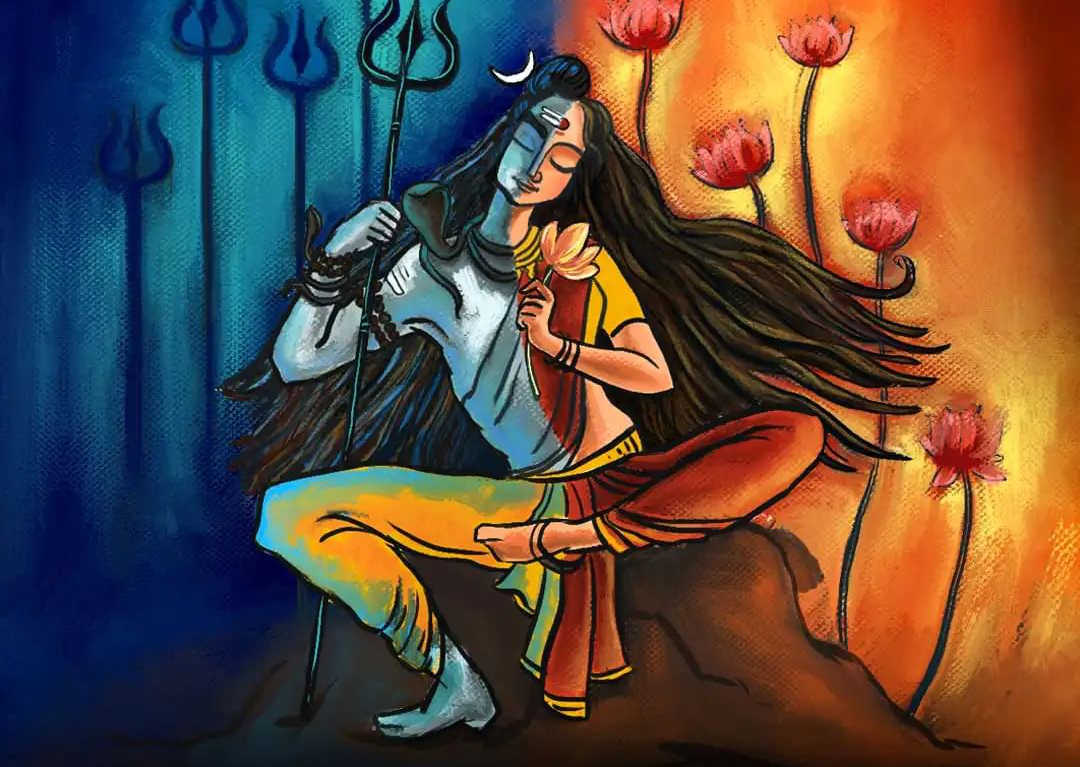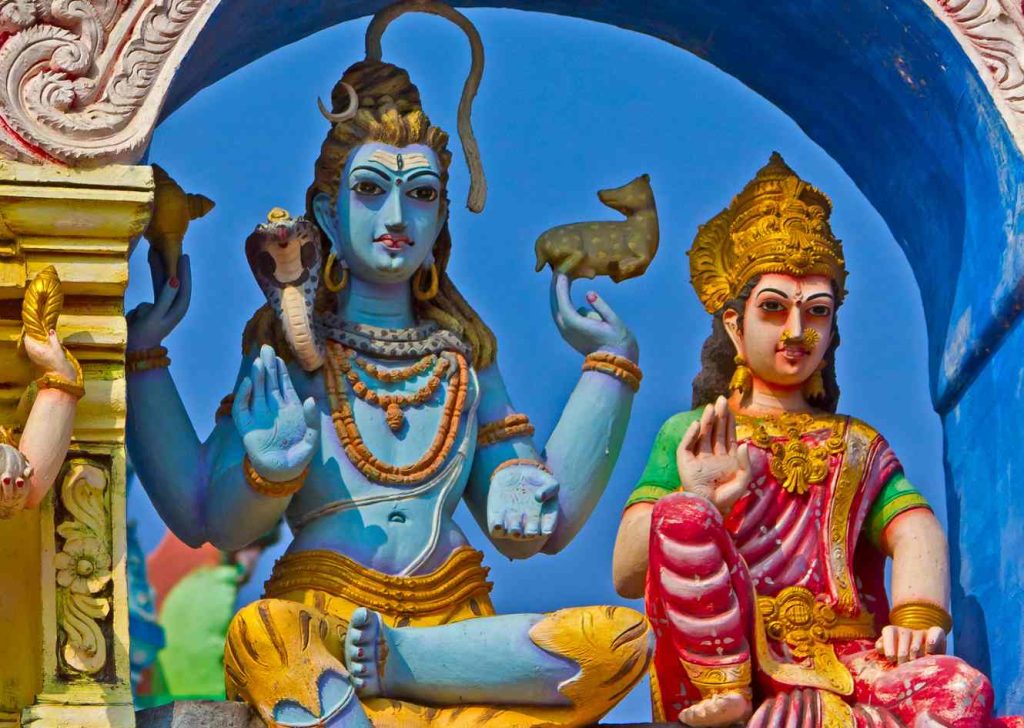Masculine and Feminine Energies Are Shiva Shakti

According to Sadhguru, every individual, regardless of their physical gender, contains both masculine and feminine energies. These energies are not about biological gender but about certain qualities of nature. In yogic terminology, they are often referred to as Ida and Pingala.
The masculine or Pingala aspect, as Sadhguru explains, is the logical and structured component of our cognition. It is associated with stability, intellect, and rationality. This energy is embodied in the sun – the fundamental source of light and life in the physical universe.
On the other hand, the feminine or Ida aspect is associated with creativity, intuition, emotion, and flexibility. It is represented by the moon, which has no light but reflects the sun’s brilliance in the night sky. Just as moon cycles significantly influence the Earth’s natural rhythms, the feminine energy within us influences our emotional and creative aspects.
Balancing Masculine and Feminine Energies
Sadhguru emphasizes that both energies are essential and must be balanced for an individual to lead a fulfilled life. This balance is not about achieving a 50-50 equilibrium but about having the ability to access both energies as the situation demands.
The relationship between Shiva and Shakti in Hindu philosophy is one of the most profound and foundational aspects of the tradition. Shiva represents pure consciousness, the unchanging and formless aspect of reality, often depicted as the static and transcendent divine masculine. On the other hand, Shakti is the dynamic and manifesting energy, represented as the creative and active divine feminine. The interplay between Shiva and Shakti forms the basis of the manifested universe.
Shiva and Shakti
Shakti is seen as the power of Shiva; without her, Shiva is Shava (a lifeless body). Shakti is the energy that manifests the universe from the formless void of Shiva’s consciousness. The dance between Shiva and Shakti, between consciousness and energy, creates, sustains, and dissolves the universe in a constant transformation flow.
In Shakta theology, Shakti is seen as the primordial cosmic energy and the embodiment of active feminine power. Her consort Shiva is the silent and passive masculine aspect, signifying pure consciousness. With her creative and dynamic energy, Shakti is the force behind the material world, while Shiva provides the silent space of consciousness in which this energy can manifest.
Shakti is the power of creation, transformation, and dissolution, while Shiva provides the substratum or field in which these changes occur. Without Shakti’s energy, Shiva remains dormant, and without Shiva’s consciousness, Shakti has no structure or direction.
The Ardhanarishvara
Sadhguru also references the Ardhanarishvara form of Shiva, half male, and half female, as a symbol of this inner balance. This form represents the divine union of the masculine consciousness (Shiva) and the feminine energy (Shakti). It is a state of wholeness and fulfillment that yogis aspire to attain.
Ardhanarishvara, an important iconographic manifestation in Hinduism, represents the synthesis of masculine and feminine energies of the universe. This composite androgynous form embodies Shiva and Shakti – the supreme divine masculine and feminine principles. The term Ardhanarishvara is a combination of three Sanskrit words: “ardha,” meaning half, “Nari,” meaning woman, and “Ishvara,” meaning Lord or God, together representing “the Lord who is half woman.”

In the Ardhanarishvara form, the right half is usually Shiva, depicted with traditional attributes such as a trident (Trishul), a serpent around his neck, and matted hair with the crescent moon. The left half is Shakti, often depicted as Goddess Parvati. She is represented with her customary adornments, including jewelry, a flower, and her hair styled with a jeweled headband.
Sadhguru’s Interpretation
According to Sadhguru, Ardhanarishvara is not about gender as commonly perceived but rather about the completeness of human nature. He explains that every human being has masculine and feminine qualities within them, irrespective of their biological gender. These qualities are not about being male or female but about certain types of qualities in nature itself. In yogic terminology, these are referred to as Ida and Pingala – the two dimensions that exist in every human being.
Sadhguru interprets Ardhanarishvara as a symbolic representation of these two energies, illustrating their equal importance and the necessity of their balance for a complete and fulfilled life. Shiva embodies the masculine energy – the unchanging consciousness or the divine source, while Shakti embodies the feminine energy – the dynamic, creative power of the cosmos.
In Sadhguru’s view, Ardhanarishvara is also a state of ecstasy that a yogi experiences upon reaching a high level of meditative attainment when the division between masculine and feminine energies dissolves, leading to non-duality and oneness. This state of being is often the ultimate goal of yogic practices.
This iconography symbolizes the unity and interdependence of the masculine and feminine aspects of the cosmos. Shiva represents the consciousness or Purusha, and Shakti represents the energy or Prakriti. They are inseparable, just as the creation cannot be separated from the creator. This symbiotic relationship signifies that masculine and feminine energies are necessary for creation and the universe’s functioning.
Ardhanarishvara is more than just a symbolic representation of the divine; it is a philosophical and cosmological concept that embraces and harmonizes the dualities of existence. This form symbolizes balance, unity, and the interplay of opposites, revealing profound truths about the universe and our place in it. It is a powerful reminder that all dualities and differences are illusions, and the ultimate reality is the unity of all existence.
